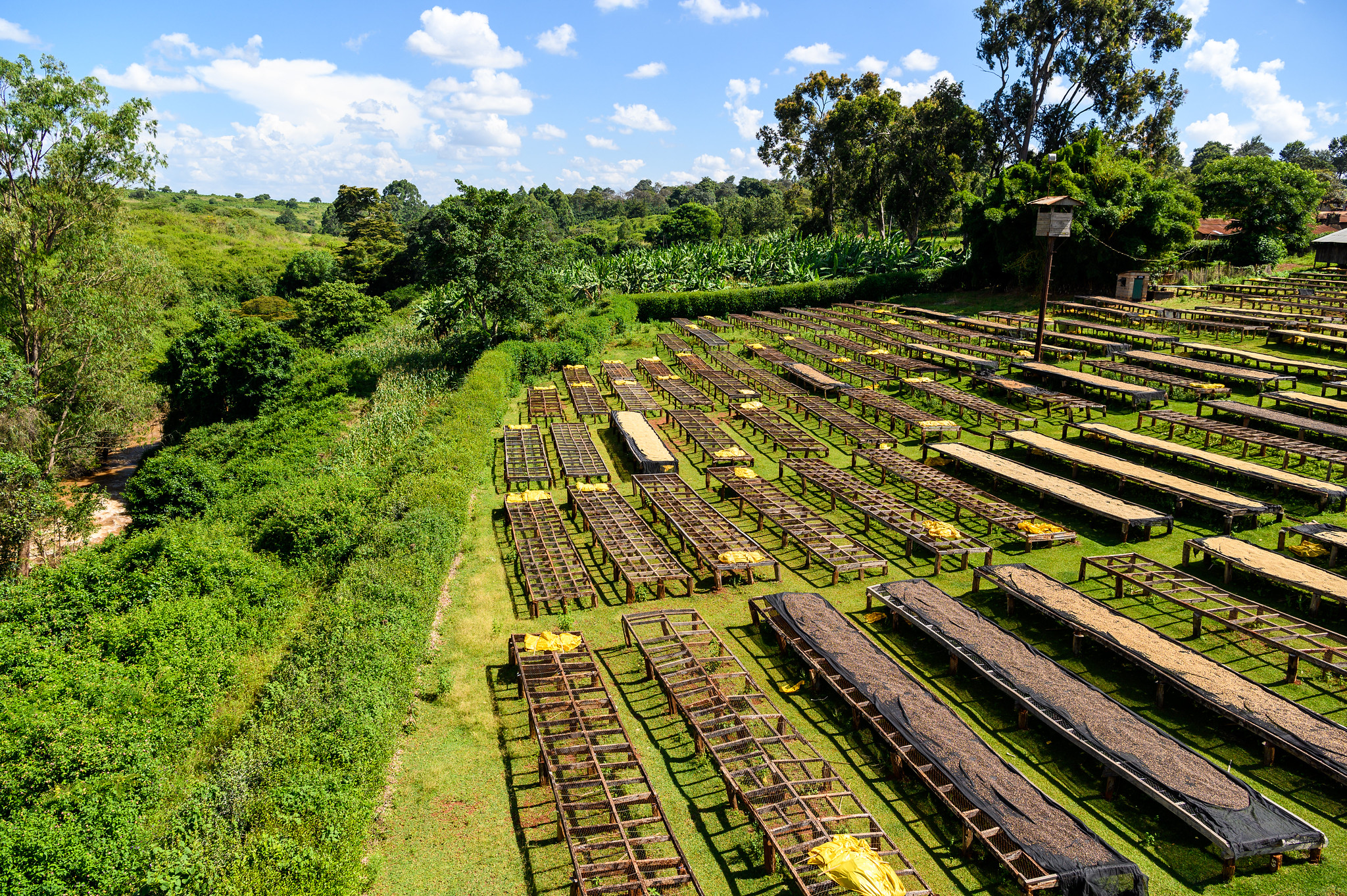Geography, soil, varietal, climate, farming method, altitude (or together what we might call ‘terroir’) all play a part in how coffee will taste. The way it is then roasted also makes a huge difference to its flavour profile.
However, there’s also a crucial stage between growing and roasting, which occurs at the farm, or processing station.
The harvested cherries will either be separated from the juices or kept together and then dried. There are several ways to do this, but we’ll concentrate on three of the most widely used methods, bearing in mind, the method used makes a big difference to the character and flavour of the resulting coffee beans.
The ‘Natural’, or ‘Dry’, process
Natural is the simplest and oldest way of processing coffee. It involves drying the coffee cherries directly on patios or raised beds, usually, these are sun-dried.
This method is very difficult to master, as the risk of fermentation or spoiling of the beans is ever-present. The cherries need to be turned frequently to avoid this.
It’s widely used in Brazil, Ethiopia, and lately in other countries because of the flavour profiles that are able to achieve. As they dry, sugars from the fruit and tannins from the skin seep into the bean. Coffees processed this way tend to be very sweet and fruity. In some of the top quality coffees notes of strawberry, blueberry, and banana are commonly found.
Once the dried cherries reach around 12% moisture content, they can be hulled – the skin and fruit are mechanically removed, rested and graded, ready for export.



The ‘Washed’, or ‘Wet’, process
The washed process if the most common method of processing and removes all the juices (also known as the ‘mucilage’) and skin of the coffee cherry before drying the beans inside.
The harvested cherries are first put through a machine called a ‘depulper’, which removes all the skin and bits of fruit. The beans are then fermented for 12-24 hours to help remove the mucilage attached to the seeds. After this, the beans are ready to be washed and taken to patios or guardiolas (mechanical dryers) for drying.
This process requires a lot of water and equipment, and so is relatively expensive. Coffees processed this way tend to have a bright and elegant acidity.


The ‘Pulped Natural’, or ‘Honey’, process
This process involves mechanically removing the skin and a good part of the mucilage of the cherries using a depulper. The beans left with a little bit of mucilage are put straight on patios to dry. Similar to the ‘natural process’ the risk of spoiling the beans is ever-present, so they need to be turned frequently as well.
There is enough sugar present in the remaining fruit to significantly increase the sweetness of coffees processed this way. In Spanish, the name for this process is miel, or ‘Honey’, which is very appropriate. Lately, this process has been modified to have different quantities of pulp/mucilage left on the beans, creating a different process altogether, like the ‘White’ ‘Yellow’, ‘Red’ and ‘Black’ Honey process.
In general, pulped natural and variations of this process deliver a more refined taste than the ‘natural’ processed beans, with more rounded chocolate and fruity notes, and typically a little bit less acidity than washed coffees.


Celebrating difference
The different processes are used for a variety of cultural and practical reasons and have developed independently of each other over centuries of coffee growing.
They are often a distinctive part of the local character of a coffee-growing region. In recent times, we have seen more availability of coffees processed in different ways, which is a great way to add value to the coffees produced by farmers worldwide.
We use variations of different processes from around the world to create our unique espresso blend.



